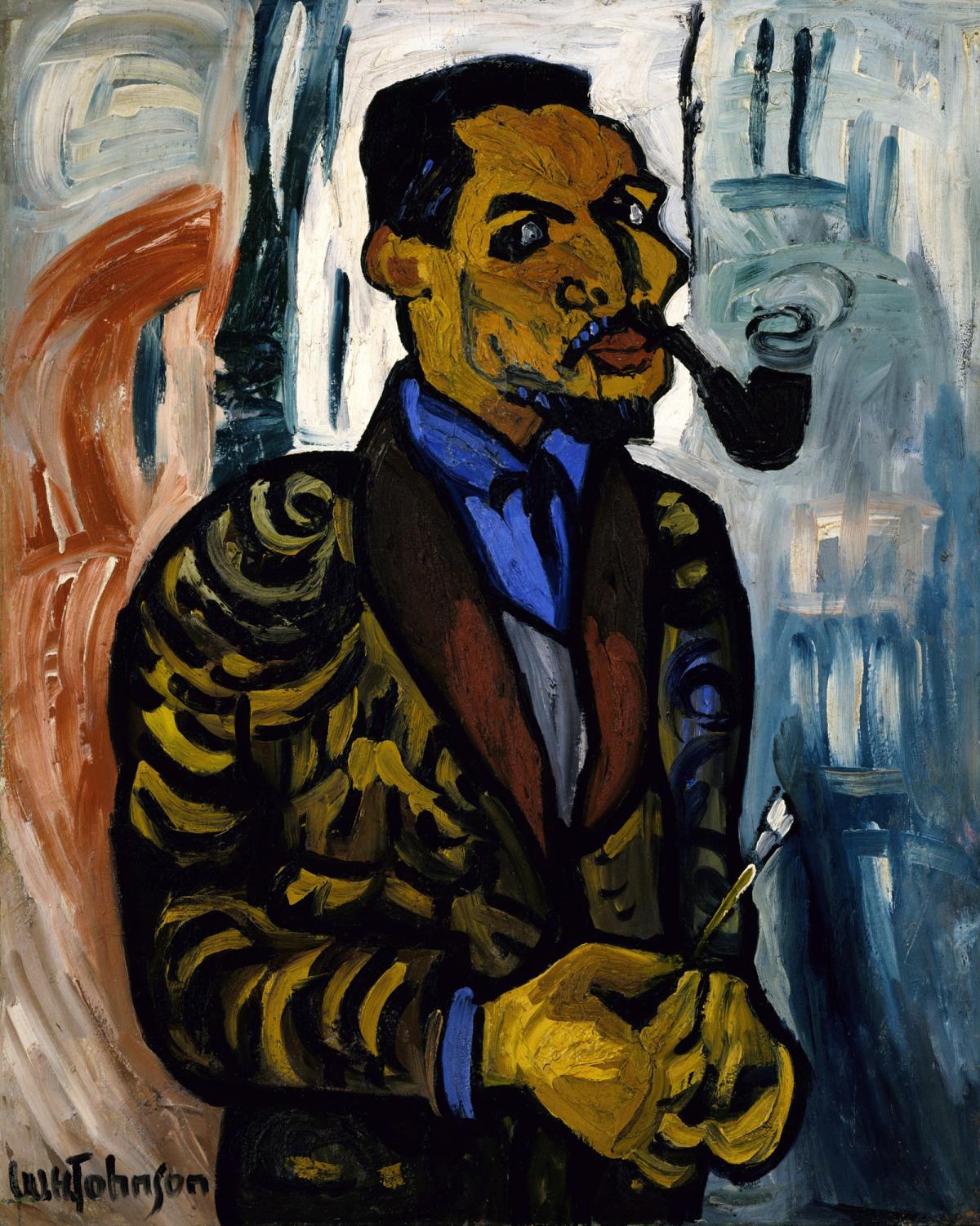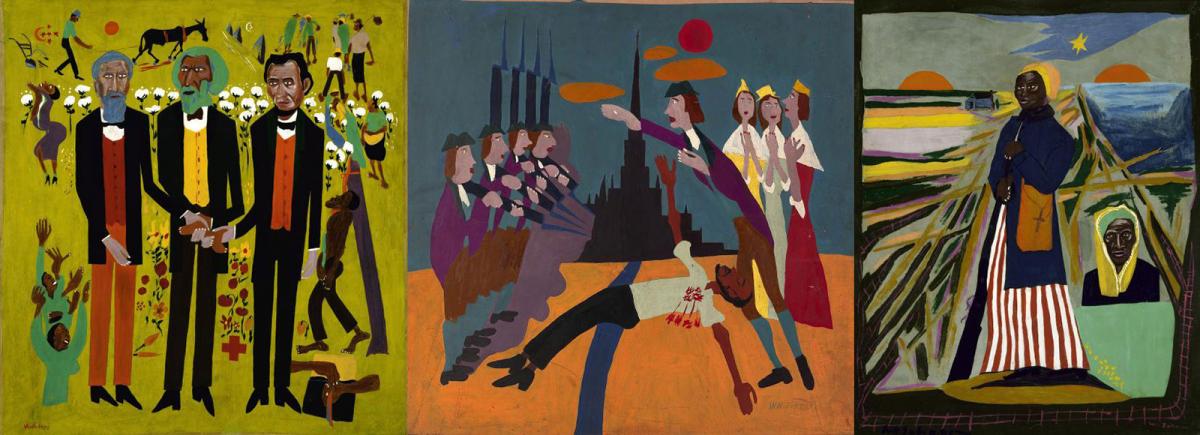William H Johnson Exhibition at Smithsonian American Art Museum
Keara Teeter, Samuel H. Kress fellow in paintings conservation (2019–2020), has been hard at work at the Smithsonian American Art Museum'southward Lunder Conservation Heart, conducting a status survey and conservation treatments of the Fighters for Freedom series in preparation for an upcoming traveling exhibition. Explore the series through her lens.
At that place are Americans who accept spent their lives fighting for measurable change for civil rights issues. From creative prints reproduced in William Still'southward book, The Underground Rails Road(1886), to the 1940–1970s photojournalism of Gordon Parks, art has been a powerful tool to document, commemorate, and encourage change going forward. William H. Johnson's Fighters for Liberty paintings reference images by Even so, Parks, and others as a method of re-depicting of import historical scenes and celebrating them through a new artistic medium.
William H. Johnson (1901–1970) was born in South Carolina and moved to New York City as a teenager. He financed his own grooming at the prestigious National University of Design and became i of their most talented students. His achievements, however, were not ever recognized. In his final year at the Academy, Johnson was turned downwardly from the school's Pulitzer Traveling Scholarship. Outraged past this decision, ane teacher personally fundraised $1,000 to finance Johnson's travel to written report in Paris. Offset in French republic, the immature artist lived and traveled throughout Europe and North Africa for over a decade before returning to the Usa. Past 1945, having determined to "paint his own people" Johnson began creating the Fighters for Freedom serial, shining a light on luminaries including Frederick Douglass, Harriet Tubman, Crispus Attucks, and Mary McLeod Bethune. This series—forth with over 1,000 of Johnson'due south other drawings, paintings, and prints—and entered the national collection, the Smithsonian American Art Museum in 1967.
For my fellowship, I began surveying the entire serial dorsum in September and institute that 26 of the 29 paintings in the serial for the exhibition required conservation treatment. This was somewhat unsurprising given that, earlier coming to SAAM's collection, the paintings had crossed the Atlantic Body of water twice. Equally an art conservator, it has been an exciting claiming to bargain with the variety of status issues from water staining to paint loss and structural damages in the solid supports (paperboard, plywood, Masonite, etc.). Each handling is unique. I must advisedly choose which conservation materials are appropriate and ask:
- Does this painting require structural stabilization and how can the composition be visually brought back together?
- Tin my additions exist hands removed in the time to come without damaging the original artwork?
- Volition my palette remain lightfast or volition the colors fade or darken over fourth dimension?
- If a new frame is required, how can information technology aid reduce direct handling of the artwork in the futurity?
Treatment began past removing surface dirt and addressing major structural issues, such as replacing missing corners, stabilizing tears, and filling losses. Side by side, I turned to accost aesthetic concerns such every bit retouching pigment loss.
Beyond returning the paintings to their original appearance, the well-nigh fulfilling aspect in treating this series has been uncovering new data about the creative person, his travels, and his utilise of materials. On the behind of some Johnson paintings, I constitute manufacturer'southward stamps (see epitome of Upson Lath below) and aircraft labels that were added during 1 of the creative person's transatlantic voyages. On the front of many artworks, I found sketches Johnson had added in graphite pencil earlier he began painting in colour.
By preserving these artworks today, the artist's message will continue to inspire hereafter generations and elicit meaningful dialogue well-nigh the pregnant of freedom. With the current Black Lives Matter movement and George Floyd protests, I retrieve about who else Johnson might take chosen to include in his Fighters for Liberty serial if he were still alive today. Although my work with SAAM is but one function of a larger story, preserving this influential series is a snapshot into the enduring power of fine art. To learn more about Johnson'southward poignant artwork, read The Washington Postal service's recent article about SAAM's Moon Over Harlem and the Archives of American Art Journal's 2019 article about SAAM's William H. Johnson history paintings.
Source: https://americanart.si.edu/blog/preserving-william-h-johnsons-fighters-freedom-series





Post a Comment for "William H Johnson Exhibition at Smithsonian American Art Museum"